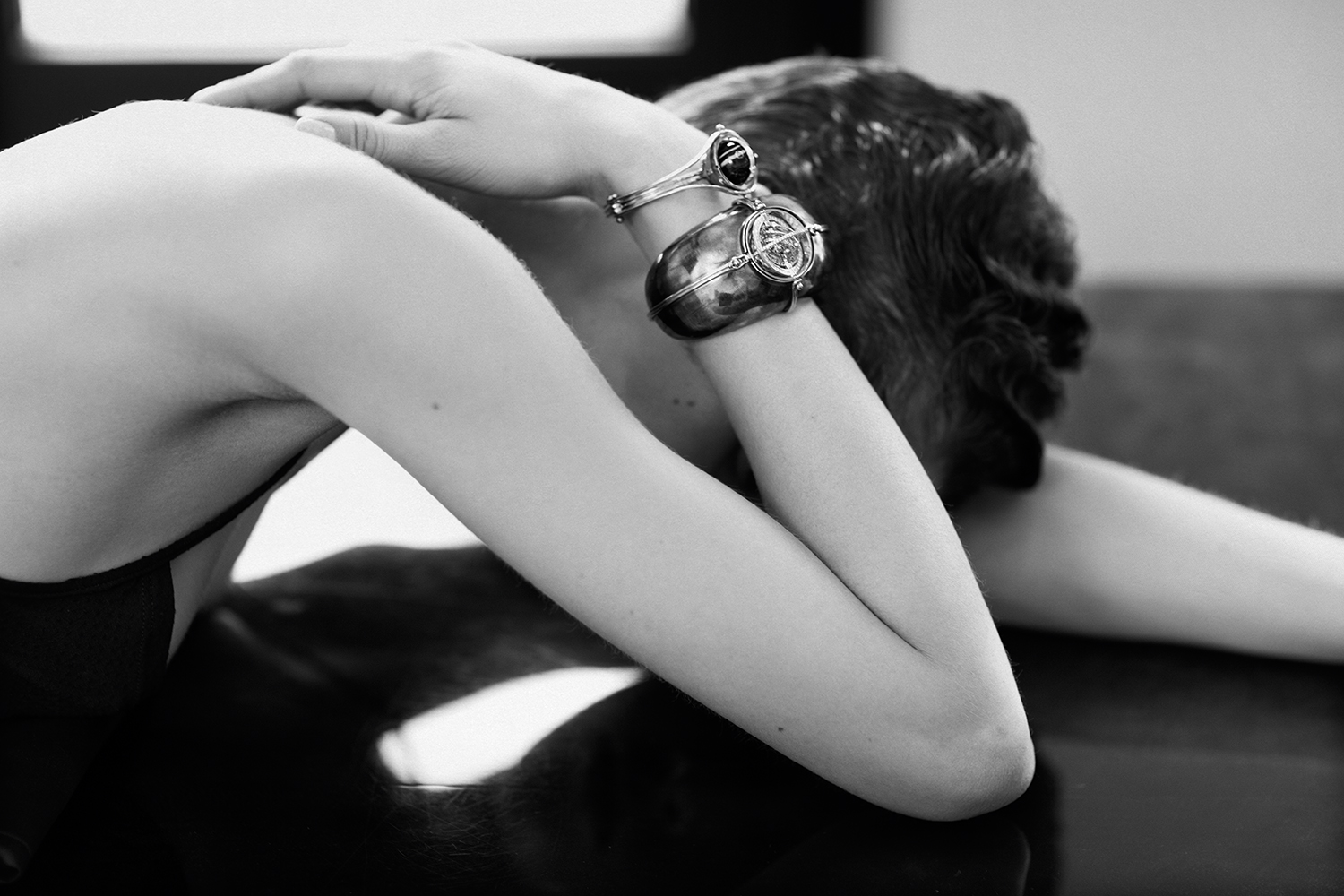Purple Magazine
— F/W 2015 issue 24
Elie Top
 Pluton bracelet with onyx globe and tarnished silver<br />and yellow gold Scaphandre cuff by ELIE TOP
Pluton bracelet with onyx globe and tarnished silver<br />and yellow gold Scaphandre cuff by ELIE TOP
first collection, fine jewelry designer, Paris
interview by LOIC PRIGENT
photo by CÉCILE BORTOLETTI
style by YASMINE ESLAMI
LOIC PRIGENT — So, this new job?
ELIE TOP — I’ve lost weight. [Laughs]
LOIC PRIGENT — From the stress?
ELIE TOP — Yes. It’s a good stress.
LOIC PRIGENT — How does it manifest?
ELIE TOP — I sleep badly, but I’m not up all night. Before the launch, I was extremely stressed, and I realized it’s not easy to do your own show and to have your work shown under your name.
LOIC PRIGENT — How old are you?
ELIE TOP — Thirty-eight.
LOIC PRIGENT — But you’re hardly a rookie.
ELIE TOP — I’ve been working for 20 years, but I’ve always been protected by the people with…